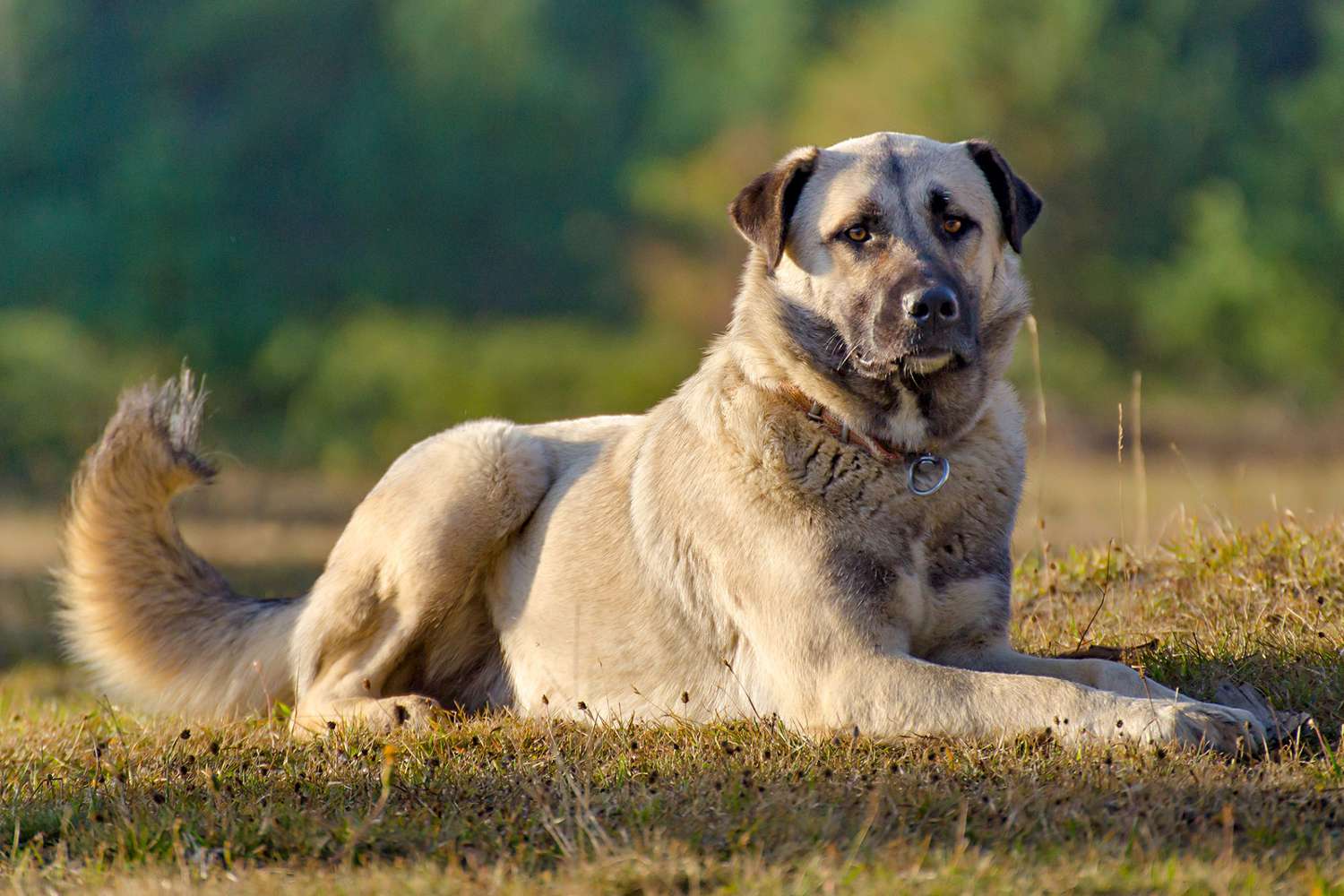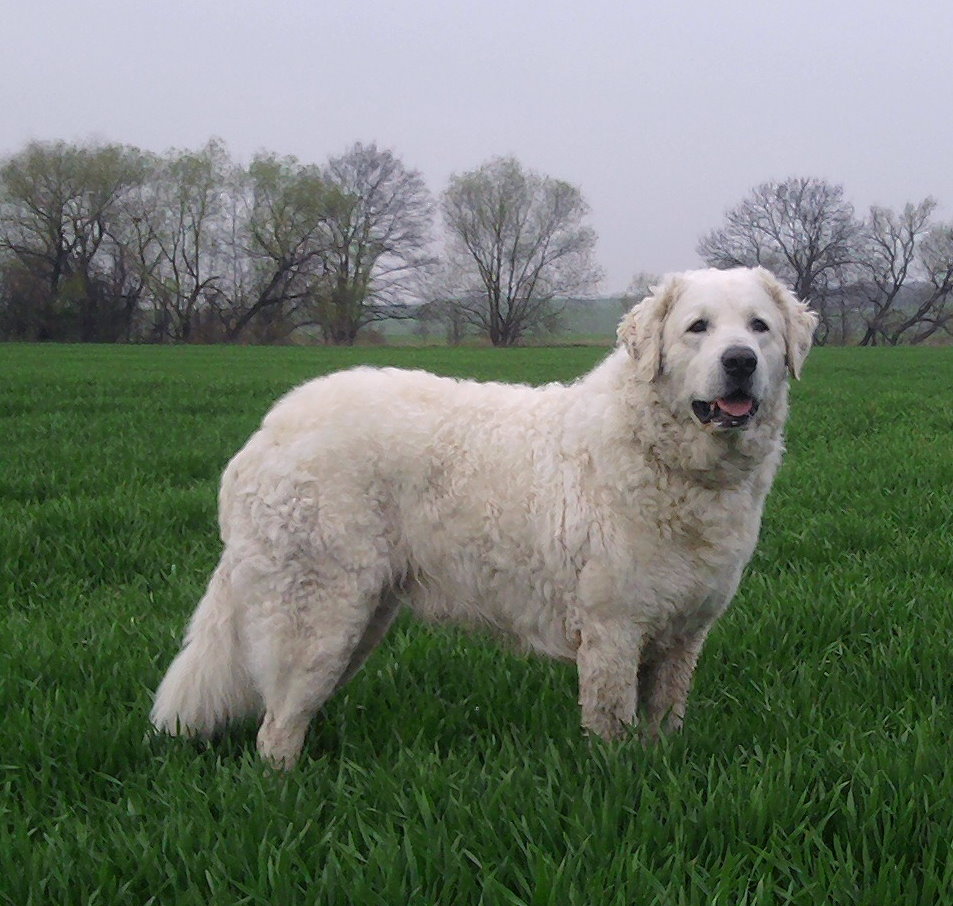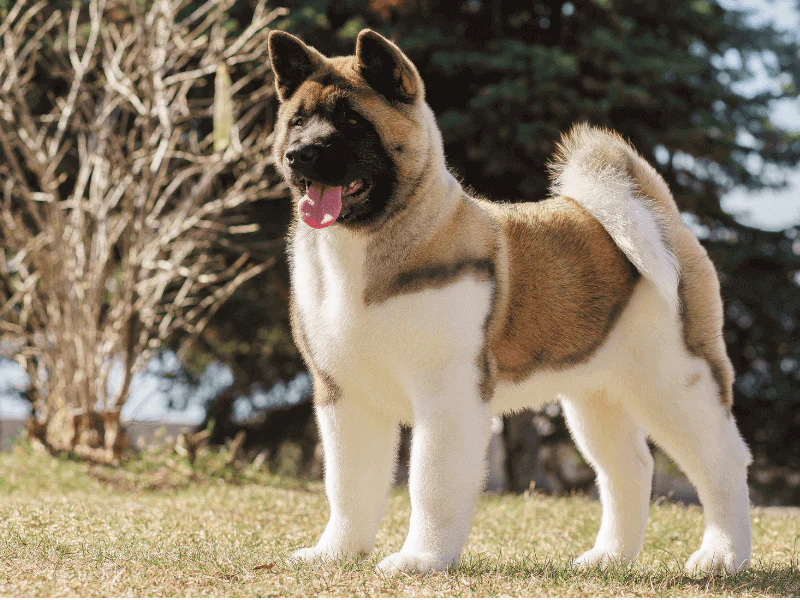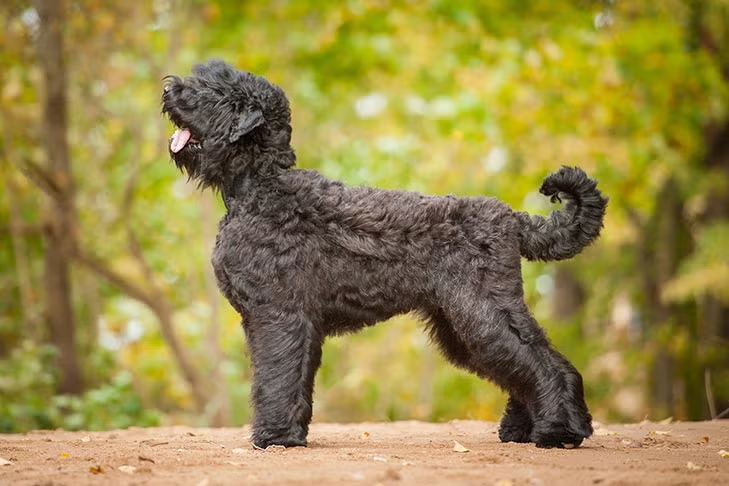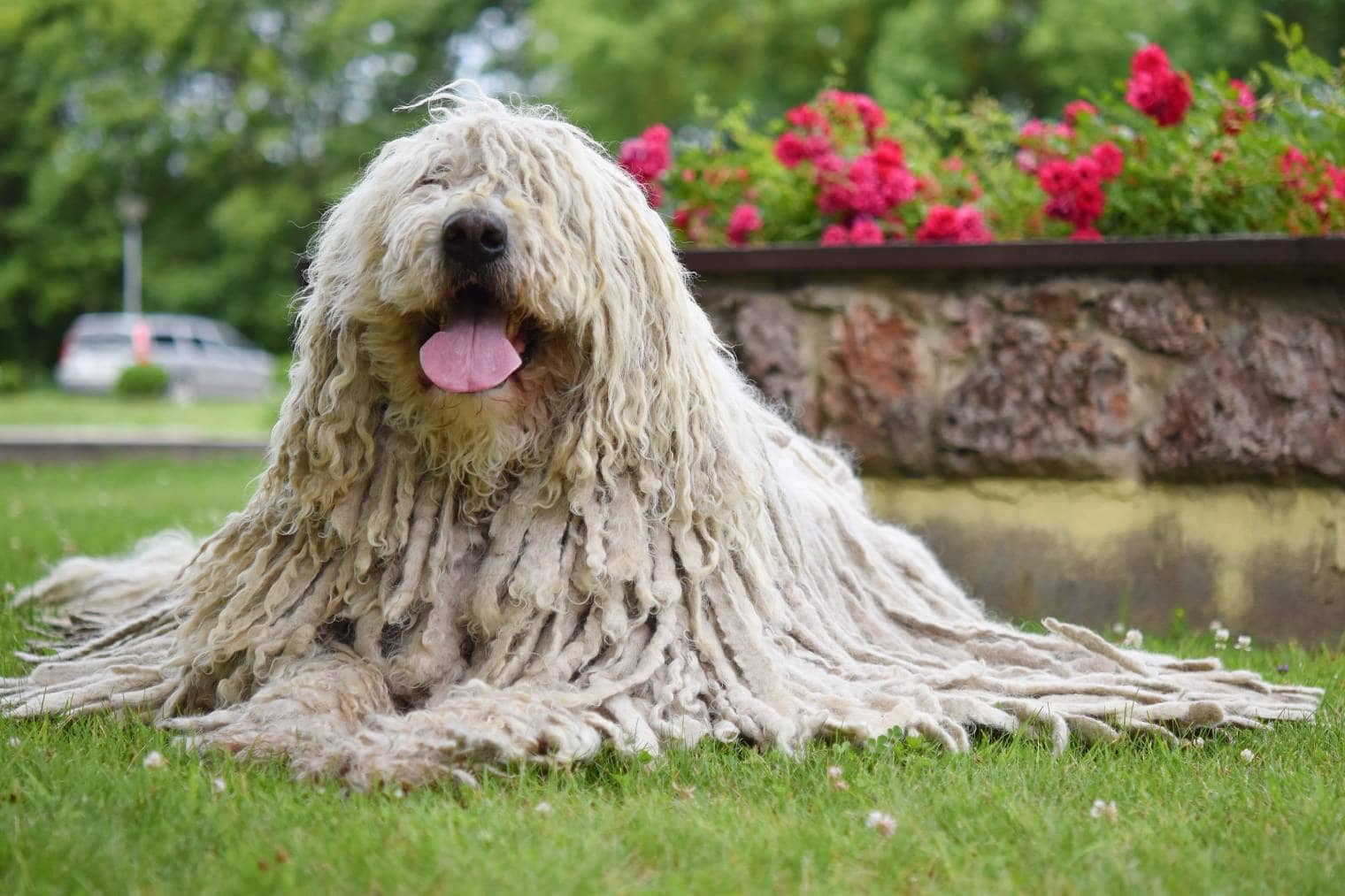The first time I encountered an Anatolian Shepherd Dog, I was completely awestruck. Standing before me was this massive, regal canine with an aura of quiet confidence that seemed to say, “I’ve been protecting flocks since before your ancestors figured out agriculture.” There’s something undeniably powerful about these dogs—not just their impressive size, but the ancient wisdom that seems to radiate from their watchful eyes.
If you’ve ever seen an Anatolian Shepherd in person, you know exactly what I’m talking about. These aren’t just dogs; they’re living connections to our ancient past, carrying thousands of years of working heritage in their DNA. Originally bred to protect livestock in the harsh, unforgiving terrain of Turkey’s Anatolian Peninsula, today’s Anatolian Shepherds continue their guardian legacy while also serving as devoted family protectors.
Whether you’re considering adding one of these magnificent guardians to your family, already share your home with an Anatolian, or are just fascinated by this remarkable breed, this comprehensive guide is for you. We’ll dive into everything from their fascinating history in the cradle of civilization to their unique personality traits, care requirements, training needs, and what it really takes to live with these impressive dogs day to day.
So grab your favorite beverage, get comfortable, and let’s explore the wonderful world of the Anatolian Shepherd Dog—a breed that combines ancient instincts with modern loyalty in one impressively large package!
The Fascinating History: Guardian of the Cradle of Civilization
The Anatolian Shepherd’s history stretches back thousands of years, making it one of the oldest known dog breeds still in existence today. When we talk about the Anatolian Shepherd, we’re discussing a breed whose ancestors were already well-established working dogs when humanity was just beginning to build civilization.
Ancient Origins
The Anatolian Shepherd’s story begins in what is now Turkey, specifically the region known as Anatolia (hence the breed’s name). Archaeological evidence suggests that dogs remarkably similar to today’s Anatolian Shepherds were working alongside humans as far back as 6,000 years ago during the Bronze Age. Some experts even trace their lineage back to the time of the Babylonian Empire around 2000 BCE.
These dogs evolved to thrive in a harsh climate where temperatures could swing from scorching hot days to freezing nights. The rugged landscape and challenging conditions naturally selected for hardy, independent dogs with great stamina and the ability to think for themselves—traits that remain hallmarks of the breed today.
Anatolian Shepherds were developed by nomadic shepherds who needed dogs that could protect their flocks from formidable predators like wolves, bears, and even lions that once roamed the region. The dogs needed to be large and intimidating enough to deter predators, fast enough to chase them off if necessary, and smart enough to work without constant human direction.
Working Heritage
Unlike herding breeds that move livestock around, Anatolian Shepherds were specifically bred as livestock guardian dogs. Their job wasn’t to herd sheep but to live among them, becoming essentially part of the flock while providing constant protection. This work required a dog with a special temperament—protective but calm, independent yet loyal, and possessing incredible discernment about what constituted a genuine threat.
For centuries, these dogs lived somewhat isolated lives in their native Turkey. Turkish shepherds valued them so highly that they were rarely sold or given to outsiders, which helped maintain the breed’s distinctive traits and working abilities. They were known locally as “Coban Kopegi,” which simply means “shepherd’s dog” in Turkish.
Coming to America
The Anatolian Shepherd remained relatively unknown to the Western world until the mid-20th century. In the late 1930s, the United States Department of Agriculture imported a pair of Anatolian Shepherds for a project called “Operation Sheepdog,” which aimed to evaluate various breeds for protecting American flocks. The outbreak of World War II interrupted this program, but interest in the breed had been sparked.
It wasn’t until the 1950s that Anatolian Shepherds began arriving in the US in meaningful numbers. The breed gained recognition from the American Kennel Club in 1996, though dedicated enthusiasts had been working with these dogs for decades prior.
Today, while Anatolian Shepherds certainly enjoy lives as beloved family companions, many continue to work as they have for millennia. In fact, their guardian abilities have found a fascinating modern application in conservation. In Namibia, Anatolian Shepherds are employed by the Cheetah Conservation Fund to protect farmers’ livestock from predators. By using dogs to deter cheetahs rather than shooting them, the program has helped reduce the killing of these endangered big cats while still protecting farmers’ livelihoods.
This combination of ancient heritage and continued working purpose makes the Anatolian Shepherd unique among modern dog breeds—a living link to our prehistoric partnership with canines that continues to serve humanity in the 21st century.
Distinctive Physical Features: The Anatolian Look
If you’ve ever had the pleasure of seeing an Anatolian Shepherd in person, you know they have a way of commanding attention without even trying. There’s something about their powerful build, weather-resistant coat, and dignified expression that just makes people stop and stare. And honestly? These dogs totally deserve the spotlight.
Size and Structure: Impressive Power
Anatolian Shepherds are large, impressive dogs with a rugged build that reflects their heritage as working guardians. Males typically stand 29 inches at the shoulder and weigh between 110-150 pounds, while females are slightly smaller at around 27 inches tall and 80-120 pounds. Despite their size, there’s nothing clumsy about an Anatolian—they move with surprising grace and agility for such a large dog.
Their body structure speaks to their working purpose. Anatolians have a deep chest that provides lung capacity for endurance, strong legs built for covering rough terrain, and a overall balanced proportion that allows for quick bursts of speed when needed to chase off predators. They’re slightly longer than they are tall, with a level topline and moderately angulated hindquarters that provide power without extremes.
One of their most notable physical features is their impressive speed. Despite their size, Anatolian Shepherds can reach speeds of up to 30 mph—a necessity when their job might involve chasing off wolves or other predators. That combination of size, strength, and speed made them formidable guardians in their native landscape.
That Distinctive Coat
The Anatolian Shepherd’s coat is perfectly adapted to the extreme temperature variations of their homeland. They have a thick double coat consisting of a dense, soft undercoat for insulation and a coarser outer coat that provides protection from the elements. The coat is typically short to medium in length, though there is some variation, with slightly longer fur forming a ruff around the neck.
When it comes to color, Anatolians come in a wide variety of shades. Fawn with a black mask is perhaps the most recognizable color pattern, but they can also be found in cream, white, brindle, liver, and various combinations with markings. The breed standard accepts any color, though a solid-colored dog with a darker mask is most traditional.
Their coat serves a practical purpose beyond just appearance. It’s incredibly weather-resistant, protecting them from both harsh sun and cold nights. The undercoat sheds heavily twice a year during seasonal changes, while the outer guard hairs provide year-round protection from brush, thorns, and even predator bites.
Head and Expression: Watchful Intelligence
An Anatolian Shepherd’s head is proportional to their body, broad but not heavy, with a slightly rounded skull. Their muzzle is strong and substantial, roughly equal in length to the skull, giving them a balanced profile. Most have a distinctive black mask on their face, framing their eyes and adding to their dignified appearance.
The eyes of an Anatolian are perhaps their most expressive feature—almond-shaped, medium-sized, and typically dark brown to amber in color. Their gaze conveys a combination of intelligence, vigilance, and calm self-assurance that’s characteristic of the breed. These are eyes that miss nothing, constantly scanning their environment for potential threats.
Their ears are triangular, medium-sized, and carried folded and close to the head unless alerted, at which point they may lift slightly at the base. When combined with their alert expression, an Anatolian’s face perfectly communicates their guardian nature—watchful, discerning, and ready to spring into action if needed.
When all these features come together—the powerful build, the protective coat, and that watchful expression—the result is a dog of remarkable presence. Even in a crowd of other large breeds, an Anatolian Shepherd stands out, commanding respect without having to make a sound.
Temperament and Personality: The Guardian Mind
Living with an Anatolian Shepherd means sharing your home with a dog whose mind works quite differently from many other breeds. These aren’t simply big, fluffy companions—they’re working dogs with thousands of years of guardian instincts hardwired into their DNA. Understanding their unique temperament is essential for anyone considering this remarkable breed.
The Guardian Mindset
At their core, Anatolian Shepherds are protectors. Every aspect of their personality stems from this fundamental guardian instinct. They view their human family as their “flock” and take the responsibility of protecting that flock extremely seriously. This isn’t a trained behavior; it’s an innate part of who they are.
This guardian mindset means Anatolians are constantly assessing their environment for potential threats. They may seem relaxed or even sleepy, but they’re always on duty, processing everything happening around them. A sudden noise at night, a stranger approaching the property, or anything unusual will immediately put them on alert.
Unlike some breeds that might bark at falling leaves, Anatolians show remarkable discernment about what constitutes a genuine threat. They’re not needlessly reactive, but when they do decide something is suspicious, they respond with impressive confidence. This might mean placing themselves between their family and a stranger, barking a warning, or simply maintaining a watchful presence until they’re satisfied the situation is safe.
Independence and Intelligence
Perhaps the most distinctive aspect of the Anatolian temperament is their independence. For millennia, these dogs needed to make decisions on their own while guarding flocks in remote areas without constant human direction. This history has produced a dog that thinks for itself and doesn’t automatically look to humans for guidance in every situation.
This independence is paired with significant intelligence. Anatolians are extremely smart dogs, but their intelligence expresses itself differently than in breeds developed for high trainability. They excel at problem-solving and situational assessment rather than performing complex commands. An Anatolian doesn’t just blindly follow orders—they evaluate whether the command makes sense in the context of their guardian role.
This combination of independence and intelligence means Anatolians aren’t the easiest dogs to train in the conventional sense. They’re not naturally inclined to perform tricks or follow commands just to please their humans. Training an Anatolian requires understanding their perspective and working with their natural instincts rather than against them.
Family Bonds
Despite their independent nature, Anatolian Shepherds form deep, loyal bonds with their families. They’re not typically “velcro dogs” that need constant physical contact, but they do like to keep their people within sight. Many Anatolian owners describe their dogs as having a quiet, calm affection rather than an exuberant, demonstrative one.
With their family, Anatolians can be surprisingly gentle and patient despite their size. Many show a special protective instinct toward children, though their size means interactions with very young children should always be supervised. They seem to intuitively understand that children are vulnerable members of the “flock” deserving of extra protection.
However, Anatolians typically maintain some emotional reserve even with family. They’re not usually dogs that seek constant petting or attention. Instead, they prefer to maintain a watchful presence, perhaps lying nearby but remaining alert to their surroundings.
Attitude Toward Strangers and Other Animals
With strangers, Anatolian Shepherds are naturally reserved and cautious. This isn’t aggression but rather a wait-and-see approach—they’re assessing whether this new person represents any threat to their family. Proper socialization is crucial so they can learn to distinguish between normal visitors and genuine threats, but even well-socialized Anatolians rarely greet strangers with enthusiasm.
When it comes to other animals, Anatolians generally do well with pets they’re raised with, considering them part of their “flock.” Many live harmoniously with cats, smaller dogs, and even livestock. However, their strong prey drive means they may chase unfamiliar small animals, and some Anatolians can be territorial with strange dogs, particularly those of the same sex.
Special Considerations
The unique temperament of the Anatolian Shepherd makes them ideal for certain situations but challenging in others. Their territorial nature means they need secure physical boundaries—these are not dogs that can be expected to respect invisible fence systems or verbal boundaries alone. A sturdy, high fence is essential both to keep them contained and to clearly define the territory they’re responsible for protecting.
Additionally, their protective instincts can be problematic in highly social households with frequent visitors. Anatolians need thorough socialization and careful management when new people enter their territory. This isn’t a breed that naturally enjoys dog parks, busy urban environments, or homes with constant strangers coming and going.
Living with an Anatolian Shepherd means embracing their guardian nature while providing the structure and socialization they need to express those instincts appropriately in a modern context. For the right owner who understands and appreciates their unique perspective, an Anatolian can be an incomparable protector and companion.
Training and Exercise: Working with the Guardian Mindset
Training an Anatolian Shepherd requires a fundamentally different approach than training many other breeds. Their independent nature, guardian instincts, and thousands of years of making their own decisions mean that conventional training methods often fall flat. Similarly, their exercise needs differ from those of high-energy sporting or herding breeds.
The Training Challenge
Let’s be honest: Anatolian Shepherds are not naturally eager to please in the way that retrievers or herding dogs might be. They weren’t developed to follow human commands without question but rather to think independently and make their own judgments about protecting their flock. This doesn’t mean they’re untrainable—just that training requires understanding their perspective.
Successful Anatolian training starts with building a relationship of mutual respect. These dignified dogs respond poorly to harsh corrections or forceful handling. Instead, they need an owner who can establish themselves as a fair and consistent leader worth respecting, not through domination but through clear communication and reasonable expectations.
Positive reinforcement methods work well with Anatolians, but even here there are nuances. Many aren’t particularly food-motivated or toy-obsessed, so finding what truly motivates your individual dog is crucial. Sometimes simple quiet praise from a respected owner means more to an Anatolian than treats or toys.
Essential Early Training
Training should begin the moment your Anatolian puppy comes home, focusing first on socialization and basic boundaries. Early socialization is absolutely critical for this breed, as it helps them learn to distinguish between normal situations and genuine threats. Expose your puppy to a wide variety of people, environments, and situations, always ensuring the experiences are positive.
Basic obedience commands like sit, stay, and come should be introduced early and practiced consistently. Leash training is particularly important, as an adult Anatolian has the size and strength to make walks challenging if they haven’t learned proper leash manners. Start with short, positive training sessions, as Anatolians quickly lose interest in repetitive exercises.
One particularly important skill is a solid “place” or “go to your bed” command, which gives you a way to direct your Anatolian away from the door when visitors arrive. This prevents them from intimidating guests while still allowing them to observe from a respectable distance.
Understanding Limitations
It’s important to have realistic expectations about training an Anatolian Shepherd. These are not dogs that will execute commands with the precision of a Border Collie or the eager enthusiasm of a Labrador Retriever. Even a well-trained Anatolian maintains some independence and will always evaluate commands through the filter of their guardian instincts.
For example, a recall command may be ignored if your Anatolian perceives a threat that needs their attention. This isn’t stubbornness or disobedience in the typical sense—it’s the dog making a judgment call based on thousands of years of selective breeding for independent guardian work.
Rather than fighting these instincts, successful Anatolian owners work with them. They understand that their dog will always maintain some decision-making authority and focus on channeling those guardian instincts appropriately rather than trying to eliminate them entirely.
Exercise Needs: Quality Over Quantity
Despite their size and working heritage, Anatolian Shepherds don’t require the intense exercise regimen that many other large working breeds do. In their traditional role, they spent most of their time watchfully observing their flocks rather than engaging in constant activity. This translates to a modern companion who needs moderate, purposeful exercise rather than hours of high-intensity activity.
Most adult Anatolians do well with about an hour of exercise daily, which can be divided between walks, moderate play sessions, and time exploring a securely fenced yard. They particularly enjoy having space to patrol—fulfilling their instinct to monitor their territory—so access to a yard is ideal, though not strictly necessary with adequate walks.
What Anatolians do need is mental stimulation and a sense of purpose. Activities that engage their guardian instincts and problem-solving abilities are particularly satisfying for them. This might include property patrols, watching over other pets, or even carrying a small pack on walks to give them a “job.”
Space Requirements
As mentioned earlier, Anatolian Shepherds generally do best in homes with some outdoor space. Their size alone makes them somewhat challenging in tiny apartments, but more importantly, these dogs have a natural desire to patrol and monitor territory. A securely fenced yard gives them appropriate space to fulfill this instinct.
The fencing itself is a critical consideration. Anatolians need sturdy, high fences—at least 6 feet tall for most individuals—as they can be impressive jumpers when motivated. The fence also provides a clear boundary for the dog’s territory, which helps satisfy their need to guard a defined space.
While they enjoy having outdoor space, Anatolians should not be relegated to living exclusively outside apart from their family. These are dogs that need to be with their “flock” to fulfill their protective instincts properly. An Anatolian banished to the backyard without family integration will often become bored, frustrated, and potentially destructive or excessively barky.
With patience, consistency, and an understanding of their guardian mindset, Anatolian Shepherds can become well-mannered, reliable companions. The key is working with their natural instincts rather than against them, providing appropriate outlets for their protective nature while teaching them the boundaries of acceptable behavior in a family setting.
Grooming and Care: Maintaining Your Anatolian
One of the more manageable aspects of Anatolian Shepherd ownership is their relatively straightforward grooming needs. While their size means caring for them requires some effort, their coat and general maintenance are less demanding than many other breeds of similar size.
Coat Care: Managing the Double Coat
The Anatolian’s weather-resistant double coat is designed to protect them from both extreme heat and cold, making it remarkably practical. For most of the year, their grooming needs are minimal—a weekly brushing with a sturdy bristle brush or slicker brush is usually sufficient to remove loose hair and prevent matting.
However, Anatolians do “blow” their undercoat twice a year, typically in spring and fall. During these shedding seasons, daily brushing becomes necessary to manage the impressive amount of fur they’ll lose. A good undercoat rake becomes invaluable during these periods to remove the soft, fluffy undercoat before it ends up all over your home.
Despite the seasonal shedding, many Anatolian owners report that the fur is less problematic than you might expect from such a large dog. The hair tends to come out in tufts rather than distributing itself evenly across all surfaces, making it somewhat easier to clean up than the fine hair of some other breeds.
Bathing and General Hygiene
Anatolian Shepherds are naturally clean dogs who rarely develop a strong “dog odor.” They typically only need bathing every 2-3 months, or when they’ve gotten particularly dirty. Overbathing can strip the natural oils from their coat, potentially leading to skin issues, so it’s best to bathe only when necessary.
When you do bathe your Anatolian, use a gentle dog shampoo formulated for double-coated breeds. Thorough rinsing is essential to prevent shampoo residue from irritating their skin. Many owners find it easiest to bathe adult Anatolians outdoors with a hose in warmer weather, given their size.
Beyond coat care, regular maintenance should include:
- Checking and cleaning ears weekly to prevent infections
- Trimming nails every 3-4 weeks, or as needed
- Brushing teeth regularly with dog-specific toothpaste
- Checking paw pads for cracks or foreign objects, especially after outdoor activities
Starting these grooming routines when your Anatolian is a puppy helps accustom them to handling and makes maintenance much easier throughout their life.
Health Considerations
Anatolian Shepherds are generally healthy dogs with a lifespan of 10-12 years, which is respectable for a breed of their size. As with all breeds, however, there are some health issues that prospective owners should be aware of:
Hip and elbow dysplasia: These developmental joint conditions can cause pain and mobility issues. Responsible breeders screen breeding stock for these conditions.
Entropion: A condition where the eyelid rolls inward, causing lashes to irritate the eye. This may require surgical correction.
Hypothyroidism: A common endocrine disorder in which the thyroid doesn’t produce enough hormones, leading to various symptoms including weight gain, lethargy, and skin issues.
Gastric dilatation-volvulus (bloat): This life-threatening emergency occurs when the stomach fills with gas and twists. Large, deep-chested breeds like the Anatolian are at higher risk.
Working with a reputable breeder who conducts appropriate health testing is the best way to minimize these risks. For Anatolians from unknown backgrounds, regular veterinary care becomes even more important for early detection of potential issues.
Nutrition and Feeding
Feeding an Anatolian Shepherd properly is essential for maintaining their health and preventing weight-related issues. These large dogs require high-quality food appropriate for their size, age, and activity level.
Despite their size, many Anatolians are relatively “easy keepers” who don’t require enormous amounts of food. Overfeeding is a common mistake that can lead to obesity and exacerbate potential joint problems. Adult Anatolians typically eat between 4-6 cups of quality dog food daily, divided into two meals.
To reduce the risk of bloat, consider:
- Feeding two smaller meals daily rather than one large meal
- Avoiding exercise for an hour before and after meals
- Using slow-feed bowls if your dog eats too quickly
- Ensuring fresh water is always available
As with any large breed, puppyhood nutrition is particularly important for proper development. Anatolian puppies should be fed a large-breed puppy formula that supports appropriate growth rates without encouraging too-rapid development that could contribute to joint issues.
Living Environment
Creating an appropriate living environment for an Anatolian Shepherd means accommodating both their physical size and their guardian instincts. These dogs appreciate having:
- A comfortable resting place where they can observe family activities
- Access to windows or elevated areas where they can monitor outside activity
- Durable toys and chews that can withstand powerful jaws
- Sturdy furniture that won’t be damaged by their size
- Quiet retreats for when they need a break from household activity
Many Anatolians enjoy having multiple resting spots throughout the home, allowing them to move as needed to keep watch over different areas. They particularly appreciate cool surfaces like tile floors during warmer weather.
With proper care and maintenance, your Anatolian Shepherd can remain a healthy, comfortable companion throughout their life. The relatively straightforward grooming requirements make them less demanding in this respect than many other large breeds, though their size does mean that all aspects of care require some physical effort on the owner’s part.
Is an Anatolian Shepherd Right for You?
After exploring the fascinating world of the Anatolian Shepherd, you may be wondering if this impressive guardian breed is the right match for your lifestyle and family. These magnificent dogs offer unwavering loyalty and protection, but they also come with specific needs and challenges that make them better suited to some homes than others.
The Ideal Anatolian Owner
Anatolian Shepherds tend to thrive with owners who:
- Have previous dog experience (generally not ideal for first-time dog owners)
- Understand and respect the breed’s guardian instincts
- Can provide clear, consistent leadership without harsh methods
- Have securely fenced property or rural/semi-rural living conditions
- Maintain a relatively stable household without constant streams of visitors
- Want a watchful, protective companion rather than a social butterfly
- Appreciate independent thinking in their canine companion
- Are willing to invest in proper training and socialization
Anatolians are probably not the right choice for people who:
- Live in apartments or homes without outdoor space
- Want a highly social, outgoing dog that loves everyone immediately
- Expect perfect obedience to commands in all situations
- Lead very active social lives with many guests coming and going
- Travel frequently without their dog
- Aren’t willing or able to manage introductions between their dog and visitors
- Need a dog that can regularly visit dog parks or busy public spaces
Lifestyle Considerations
Beyond the basic question of compatibility, there are practical lifestyle considerations that potential Anatolian owners should evaluate:
Living space: While Anatolians don’t require vast acreage, they do best with at least some yard space they can patrol. Secure fencing is essential—both for containing these powerful dogs and for clearly defining their territory.
Family composition: Anatolians can do well in families with children, particularly when raised with them from puppyhood. However, their size and independent nature mean they may not be ideal for families with very young children unless the adults have considerable experience with large guardian breeds.
Other pets: Many Anatolians live harmoniously with other pets, especially when introduced as puppies. However, some individuals may show territorial behavior toward other dogs, particularly those of the same sex.
Social life: If you frequently entertain or have many visitors to your home, an Anatolian will require careful management and training to accept this constant flow of “strangers” into their territory.
Financial Considerations
Owning an Anatolian Shepherd represents a significant financial commitment. Initial costs include the purchase price ($1,000-$2,500 from reputable breeders), setup supplies, and initial veterinary care.
Ongoing expenses include:
- Quality food appropriate for large breeds
- Regular veterinary care and preventative medications
- Training classes or private consultation
- Properly sized equipment (beds, crates, collars, etc.)
- Potential emergency veterinary care (which can be substantial for large breeds)
The lifetime cost of owning an Anatolian can easily exceed $10,000-$15,000, making financial readiness an important factor in the decision to bring one home.
Finding Your Anatolian
If you decide an Anatolian Shepherd is the right breed for you, take time to find a responsible source:
Reputable breeders: Look for breeders who conduct appropriate health testing, raise puppies in a home environment, provide early socialization, and are knowledgeable about the breed. Expect to be thoroughly interviewed yourself—good breeders care deeply about where their puppies go.
Rescue organizations: Breed-specific rescues like the National Anatolian Shepherd Rescue Network can be excellent resources. Adult dogs can be wonderful companions, and their personalities are already established, making it easier to find a good match for your lifestyle.
Regardless of source, meet the dog in person if possible before committing, and ask lots of questions about health, temperament, and care requirements.
The Anatolian Lifestyle
Living with an Anatolian Shepherd means embracing certain lifestyle adjustments:
Visitor management will become routine—you’ll need protocols for introducing people to your dog and managing their interactions.
Travel requires planning for either dog-friendly accommodations or trusted care in your absence.
Property maintenance includes regular fence checks and possibly reinforcement for determined diggers or jumpers.
Daily life includes accommodating a large, independent-minded dog who may have strong opinions about household activities.
Final Thoughts
Anatolian Shepherds are extraordinary dogs for the right owners. Their combination of protective instincts, intelligence, and loyalty makes them incomparable guardians and companions for those willing to understand and work with their unique nature.
The relationship with an Anatolian Shepherd is different from that with many other breeds. They’re not dogs that live to please their owners or seek constant affirmation. Instead, they offer a more mature partnership based on mutual respect and shared purpose. When that partnership works, there are few relationships more rewarding.
If you have the space, experience, and desire for a confident guardian who will consider you and your family their personal responsibility, the Anatolian Shepherd might be your perfect match. These ancient guardians bring thousands of years of working heritage into your home, along with a dignified presence that’s truly unforgettable.
